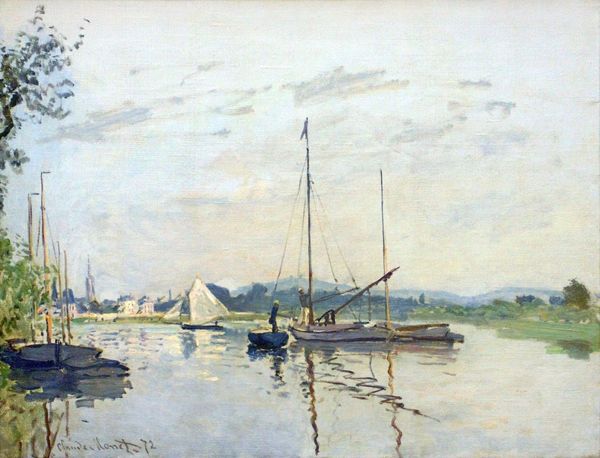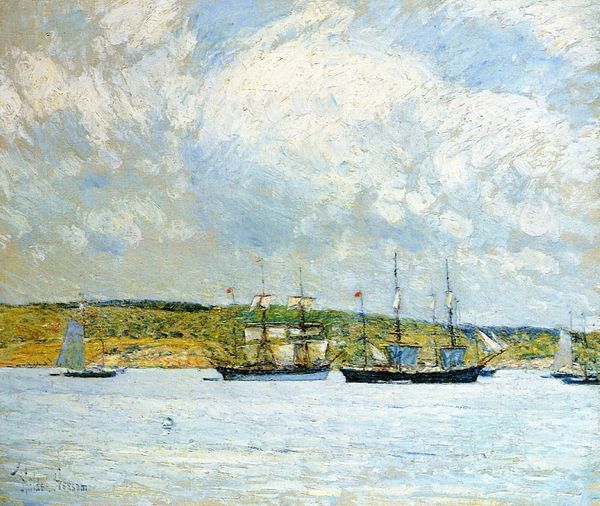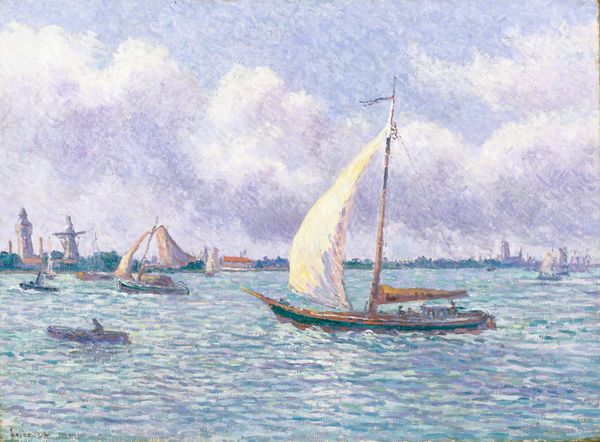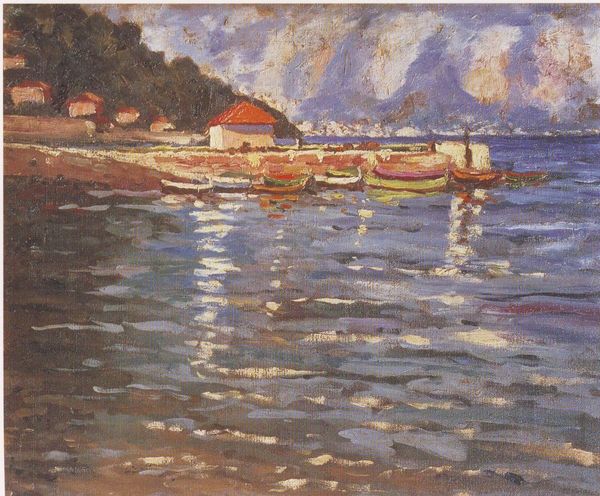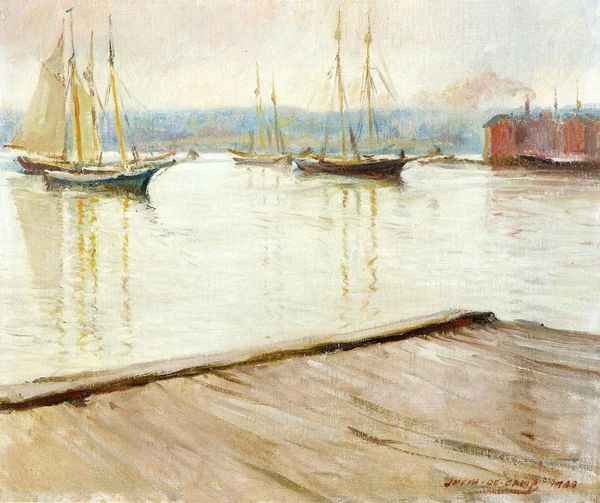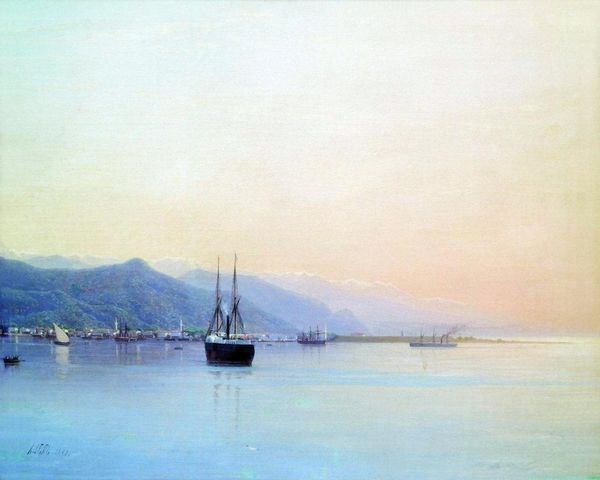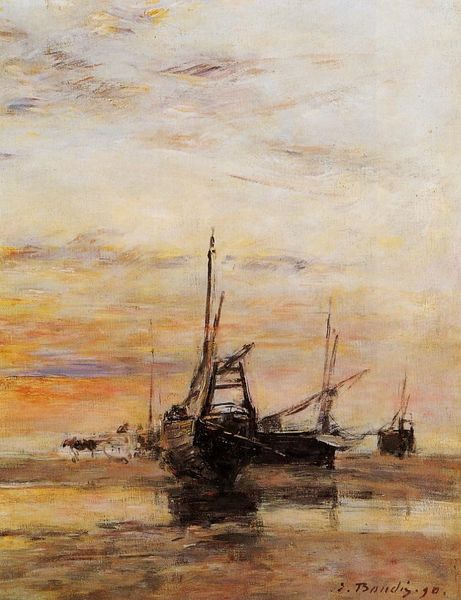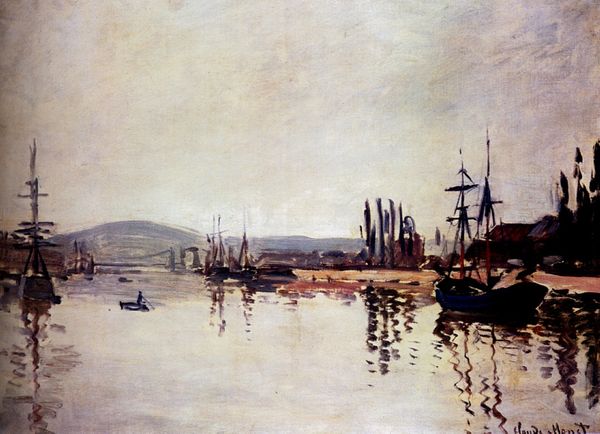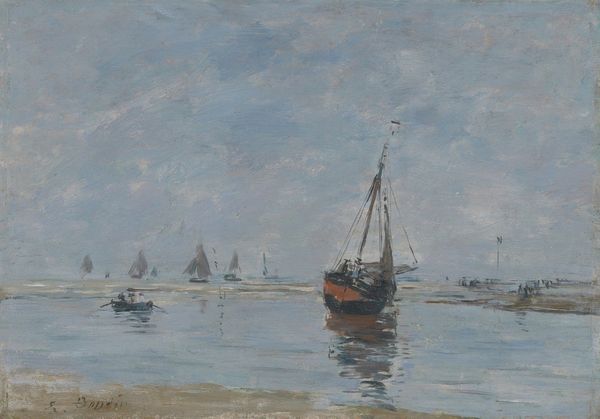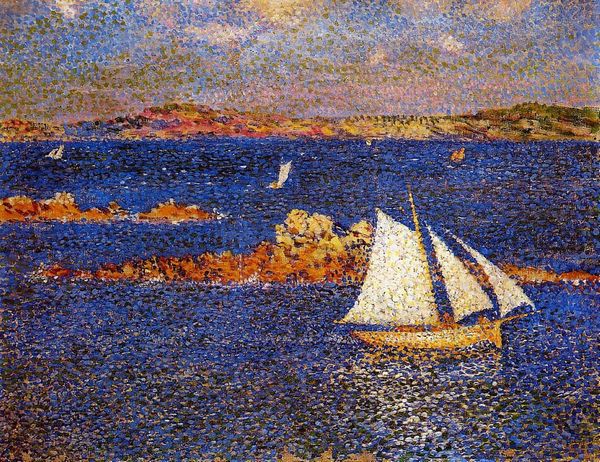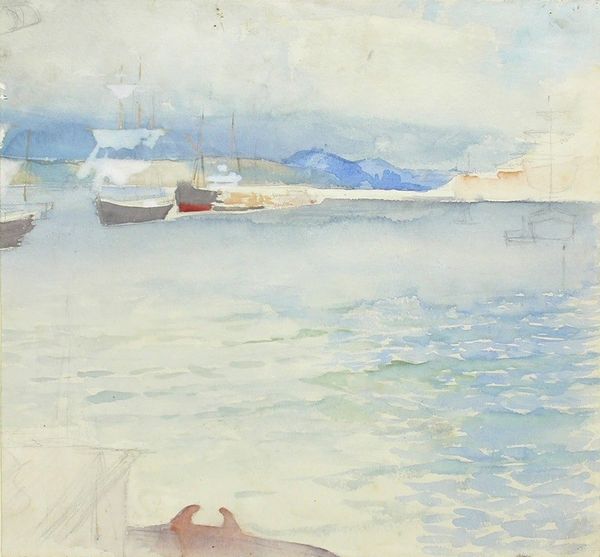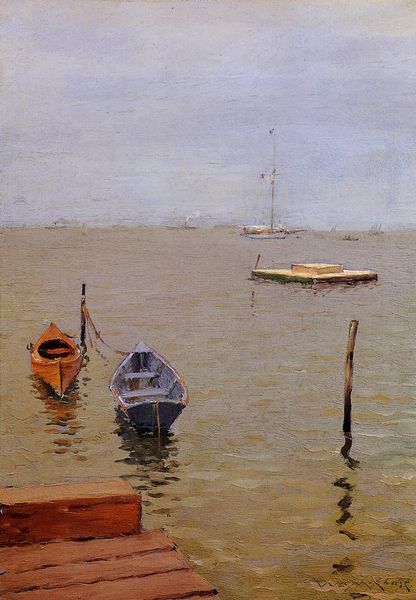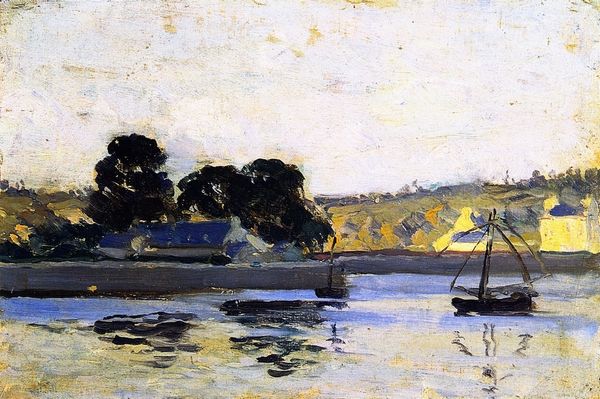
painting, oil-paint
#
painting
#
oil-paint
#
landscape
#
impressionist landscape
#
cityscape
#
post-impressionism
Copyright: Public domain
Curator: Looking at "Saint Tropez, after the storm," painted in 1895 by Paul Signac, I’m struck by its palpable stillness, that sense of calm after turbulence. Editor: Yes, it's soothing. The light feels so diffused and watery. What exactly are we seeing here, beyond the visual tranquility? Curator: Signac captures the French harbor city following a storm. Notice how the boats rest gently in the harbor, reflecting in the water, mimicking and multiplying into a unified scene with touches of brighter colors highlighting roofs of homes on the far left. He employs the pointillist technique masterfully, building the image through myriad small dots. Editor: Pointillism. Isn’t it a scientific approach intended to heighten visual perception? Curator: Precisely. Signac, like Seurat, was interested in color theory. He thought carefully about how small dabs of pure color blend optically in the viewer's eye, creating luminosity and vibrancy. He doesn't just show us the scene. Instead, he makes us witness light itself in action, flickering over the water. In art historical discourse, we'd see it as an effort to record visual sensations faithfully on canvas. Editor: Interesting. The water seems rendered less as substance and more as fractured reflections. Is there something sociopolitical informing the painting or the place depicted, as you said earlier? Curator: Absolutely. In the late 19th century, harbor cities such as Saint Tropez experienced massive transformation thanks to the increasing industrialization. These changes caused an uprooting of identities in France due to migration and development, which artists often grappled with when recording new landscape. Signac used a painting like this to look at what had happened in that moment as a record in time. Editor: A pause in time. Even after the storm. The stillness carries, now knowing the place’s history. The little dabs of paint resonate in the moment even still, and I wonder how it reflects back onto the culture that consumed them at the time and after. Curator: And perhaps they echo with us still as well, capturing something enduring about our relationship to the world and how we choose to see it as we move through it ourselves. Thank you.
Comments
No comments
Be the first to comment and join the conversation on the ultimate creative platform.
